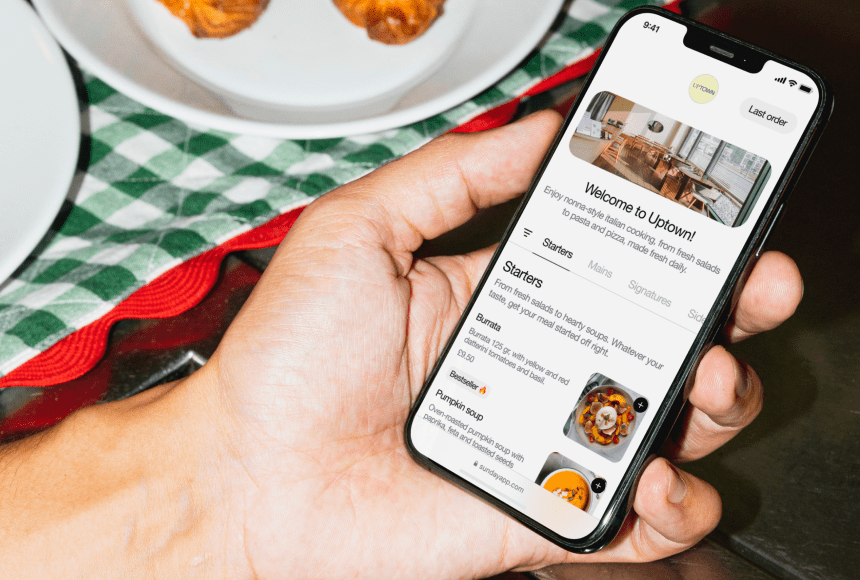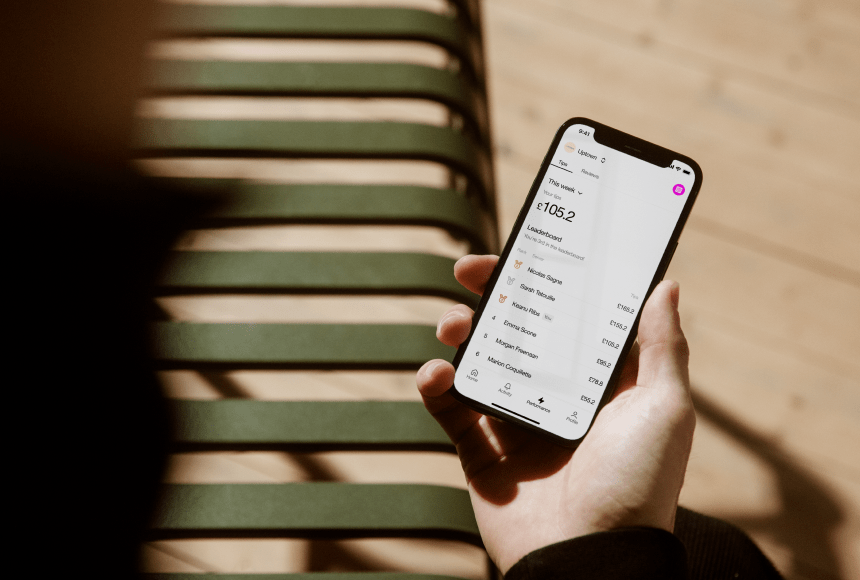
Simplifying Service: A Practical Guide to QR Code Ordering and Your Till Setup
Why QR Code Ordering Matters Today
QR codes in restaurants have surged in popularity over the last few years, especially in the UK. Whether it’s a neighbourhood café wanting to speed up service or a high-end bistro aiming for a contactless experience, the principle remains the same: guests scan a code, view the menu on their phone, and place orders without waiting. This evolution can feel like a big leap if you’ve relied on your trusty till (or point-of-sale system) for ages. How do you make both systems communicate seamlessly? And is it worth the trouble?
In short, yes. According to a UKHospitality overview, diners are increasingly open to digital solutions that give them more control over their experience. By integrating a QR code ordering platform with your existing till system, you gain a smoother workflow, reduce errors, and often boost table turnover. More importantly, you can free your staff from repetitive tasks, letting them focus on genuine hospitality—from recommending the perfect starter to checking that each guest’s meal lives up to your restaurant’s reputation.
Understanding the Basics of Integration
Before you jump into the specifics, it’s helpful to clarify what “integration” really means. In an ideal setup, any order placed via the QR code automatically appears in your current point-of-sale interface. No double entry. No missed items. The correct totals show up at the table, and your stock levels update in real time. Meanwhile, staff can see new orders the moment they’re submitted, exactly as if a server had keyed them in manually.
This seamless flow is crucial. When you have to copy and paste, or manually re-enter line items from a separate dashboard, you’re inviting confusion—and eventually, mistakes. The best solutions let your existing till “talk” to the QR code ordering platform, so every item and every price is consistent across both channels.
1. Confirming Compatibility with Your Till System
The first step is straightforward: find out if your till provider already supports QR code ordering via an existing API or plugin. Many modern POS systems—especially cloud-based ones—offer open APIs or app marketplaces that allow third-party platforms to connect with minimal fuss.
- Check documentation: Most providers have a support site listing compatible integrations. Search for “QR code ordering” or “mobile ordering” to see what’s natively supported.
- Talk to your rep: If it’s not explicitly advertised, call or email your POS rep. They might offer a lesser-known solution or be in the process of developing one.
- Evaluate custom options: For more unique setups, a custom integration might be needed. This can be more complex, but it’s a worthwhile investment if you’re serious about adopting QR code ordering in a busy, high-volume environment.
If you’re unsure whether your existing system can handle it, a quick chat with your provider or the potential QR code ordering partner will help you cut through the jargon and see a clear path forward.
2. Mapping Your Menu for Seamless Sync
One major advantage of integrating a QR code platform with your existing till system is consistency. But for it to work, every dish and drink needs to be accurately mapped. For instance, your famous “Ham & Stilton Burger” in the POS must match exactly what appears on the digital menu—spelling, price, and variations included.
Key tips for menu mapping:
- Standardise naming: If you have multiple versions of a dish (“small,” “large,” “double portion”), ensure they’re labelled consistently across both platforms.
- Include modifiers: Sides, dressings, or temperature preferences (medium-rare steak vs. well-done) need to be reflected. A properly set-up system will allow customers to pick these customisations on their phone.
- Keep it current: If you rotate specials each week, factor that into your process. Updating it in your POS and forgetting to update the QR code menu leads to frustration—or missed sales. The best approach? Automate it, so any change in the till updates your digital menu instantly.
When your menu categories and item codes match, it paves the way for accurate, real-time order management. This is where an integrated partner like sunday can shine, providing a unified experience for both the diner’s phone and your own operations dashboard.
3. Ensuring Real-Time Stock Management
Running out of an ingredient and having to tell a table that their chosen dish isn’t available is awkward. With a fully integrated system, you can mitigate that scenario. The moment your stock goes to zero in the till, the QR code ordering interface can disable or grey out that dish, preventing orders for something you no longer have.
- Stay on top of inventory: If your POS has an automated stock countdown feature, make sure it’s linked to the QR code system. Every time a guest orders a dish, the stock count updates in real time.
- Avoid out-of-date updates: Manual processes can be slow. By the time a staff member logs a shortage, multiple orders might slip through. Instant data sync reduces disappointed diners.
This real-time awareness helps you maintain a smooth operation, especially during busy periods when your kitchen can’t afford confusion. It also builds trust with customers, who appreciate an accurate, up-to-the-minute menu—no false promises.
4. Adapting Your Workflow: Front and Back-of-House
You might think that once you connect the systems, everything magically works on its own. In reality, you’ll want to tweak your workflow slightly to exploit new efficiencies. For example, when a QR code order arrives, do you want it to print automatically in the kitchen? Or appear on a digital display? If you rely on a single printer, how do you differentiate between server-keyed orders and customer-scanned orders?
Front-of-house changes:
- Train your staff: They should be ready to guide customers on using the QR code system if someone is unfamiliar. Even a brief sentence like, “Feel free to scan the code to order or pay whenever you’re ready,” can do wonders.
- Redefine roles: Your servers might spend less time manually taking orders. Encourage them to devote that extra time to recommending dishes, sharing food stories, and upselling specials. This personal touch can boost average spend.
Back-of-house changes:
- Kitchen display or printer integration: Decide where these orders pop up. You don’t want them overlooked, so test the flow before going live.
- Traffic management: If your kitchen is used to a steady trickle of orders keyed in by staff, be prepared for a spike when a large table decides to place orders simultaneously. Communicate with your team on how to handle sudden volume surges.
The payoff is huge: once staff see how many tasks automation handles, they’ll appreciate having more time for actual hospitality rather than data entry.
5. Reviewing Payment Coordination
The perfect integration extends all the way to the final bill. Ideally, a customer who has ordered via a QR code can also pay seamlessly, with that payment logged in your existing system. No more cross-verifying separate tabs or re-keying totals into your card reader.
Areas to consider:
- Accepted methods: Does your system allow card, contactless, Apple Pay, or Google Pay? Make sure your QR code platform supports all relevant payment types so guests don’t face last-minute hurdles.
- Automatic billing: When payment is completed, your till should close out that table’s bill. It’s a small detail, but it prevents confusion at shift’s end.
- Tips and splitting: Many UK diners like to split the bill or leave tips. Ensure your integrated system can handle these requests easily—without forcing a server to step in and do it manually.
A streamlined payment process means diners leave with a positive final impression, unburdened by waiting around for a card machine or a server. This also benefits your staff, who can quickly move on to greeting new arrivals or tending to other tables.
6. Training Your Team and Communicating with Diners
Technology succeeds only when people feel comfortable using it. This is especially true for something as personal as dining. To reap the full benefits, you’ll need to guide both staff and customers on how your QR code ordering works alongside your till. Even the best system can spark confusion if diners don’t know the steps—or if staff can’t explain it confidently.
- Staff training sessions: Host short, hands-on workshops. Let servers and hosts test the ordering process exactly as diners would, so they can troubleshoot basic questions on the spot.
- Prominent instructions: Place small tabletop signs with a brief “how to order” note. A line like, “Scan. Browse. Order. Pay.” can be enough, especially if staff mention it when seating guests.
- Soft launch: If you’re nervous about day-one hiccups, roll out the integration gradually. Start with a few tables, gather feedback, and refine any bumps before expanding site-wide.
This approach ensures that both customers and employees stay on the same page, minimising frustration and turning your new system into a selling point rather than a deterrent.
7. Observing Customer Behaviour and Feedback
One underrated perk of integrating QR code ordering with your till is data. Because everything’s tracked digitally, you’ll gain insights into order times, popular items, and how quickly each table pays. But numbers alone can be misleading without context. Encourage your servers to listen to real-time feedback. Are guests praising the convenience? Are they confused by the menu layout? Are older diners reluctant to scan codes?
- Staff check-ins: Train servers to briefly ask how guests found the ordering process. This casual conversation can highlight small improvements—maybe your font size is too small or the dessert category is buried.
- Encourage reviews: Platforms like sunday can prompt diners to leave a Google review right after paying. Skimming through comments helps you spot recurring complaints or compliments about ordering.
- Periodic audits: Every month or quarter, review your top-selling items, busiest times, and average table turn. Compare these metrics pre- and post-QR code adoption to see where you’re making gains—or where you might tweak your approach.
Armed with both data and anecdotal feedback, you can refine your integrated system over time, ensuring a flawless experience for guests and staff alike.
8. Identifying Potential Pitfalls
Even the most robust technology can have hiccups. By anticipating likely challenges, you’ll be better prepared to handle them:
- Internet outages: If your restaurant’s Wi-Fi drops, the QR code ordering platform might stall. Consider a backup 4G router or ensure your devices can run offline temporarily.
- Device compatibility: Not every diner has the same smartphone. Some might struggle with scanning codes or have older devices. Keep a few physical menus or a backup ordering method on hand.
- Integration glitches: If your POS updates or your QR code solution upgrades, there could be a short period of misalignment. Having responsive customer support from both ends is crucial.
Effective communication goes a long way. Let your team know what to do if a technical snag occurs—like how to revert to manual input temporarily. Prompt, transparent handling of issues fosters trust among diners, too.
9. Spotlight on sunday
If you’re searching for a QR code ordering platform that naturally meshes with your existing setup, sunday can fit the bill. By simply scanning a code, guests can explore your menu, customise dishes, and pay in a few taps. Integration-wise, sunday aims to synchronise orders and payments with a variety of POS systems, so your staff rarely has to juggle between multiple dashboards.
Beyond that, sunday includes a built-in tipping feature, plus a gentle prompt for leaving a Google review—great for boosting your restaurant’s online presence. It’s an example of how a single platform can streamline multiple customer touchpoints, all while giving you more control over how orders appear in your own system.
Future-Proofing Your Restaurant
QR code ordering isn’t just a passing fad. As technology continues to shape dining habits, more and more customers expect at least the option to order directly from their phone. Integrating this with your existing till system ensures you’re not running two disconnected processes. You’ll have fewer operational headaches, a more cohesive brand identity, and a pleasant, hassle-free experience for guests who want convenience without sacrificing personal service.
There’s also a big-picture element: as consumer tastes evolve, a flexible, integrated system makes it easier to add new features—like loyalty programs or dynamic pricing—down the road. Whether your priority is boosting efficiency or delivering a cutting-edge diner experience, bridging that gap between your till and a QR code ordering solution sets the foundation for sustainable growth.
When done right, the benefits ripple through your entire operation. Your front-of-house staff can shift from order-takers to true hospitality experts. Your kitchen sees accurate orders in real time. Diners enjoy a frictionless journey from scanning the menu to settling the bill. And you—well, you get to enjoy a streamlined, data-rich environment that helps you make smarter decisions for your restaurant’s future.
Find out more today
Drop us your details below and we’ll reach out within the next 24
All your orders – in and out.
Our mobile ordering solution allows your customers to order and pay whenever they are ready with an integrated QR code.


